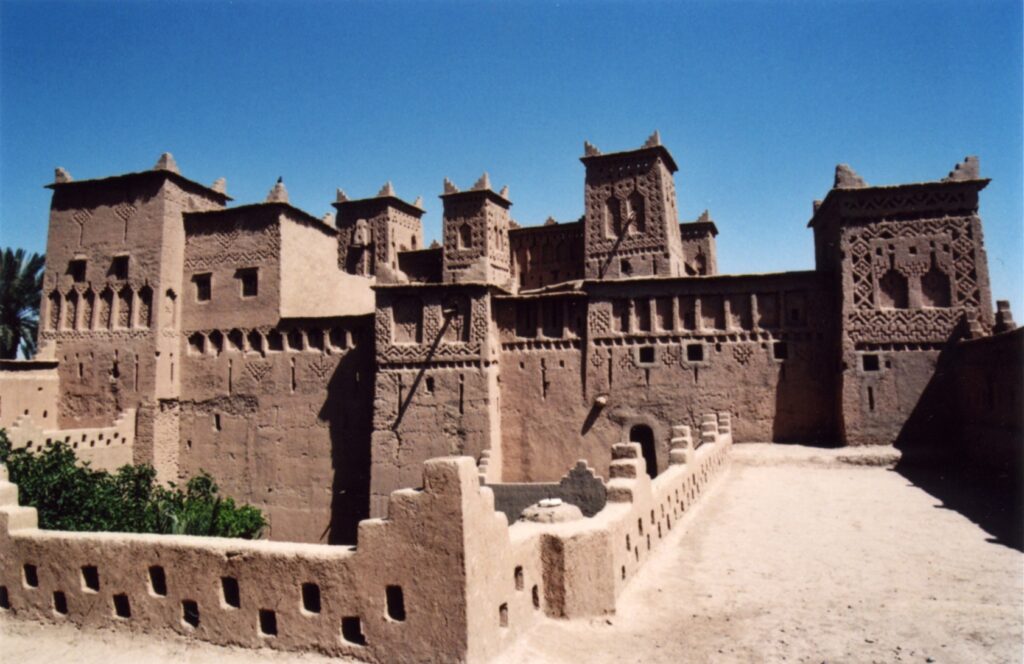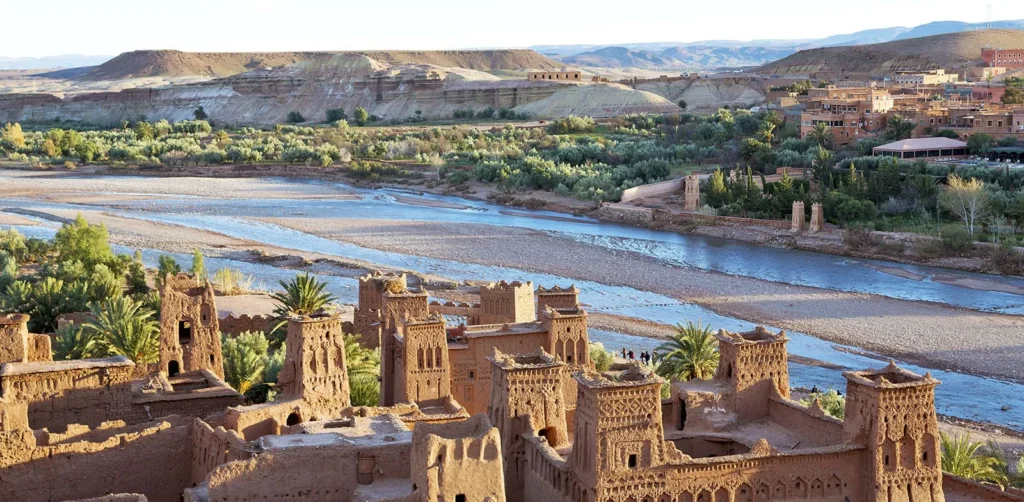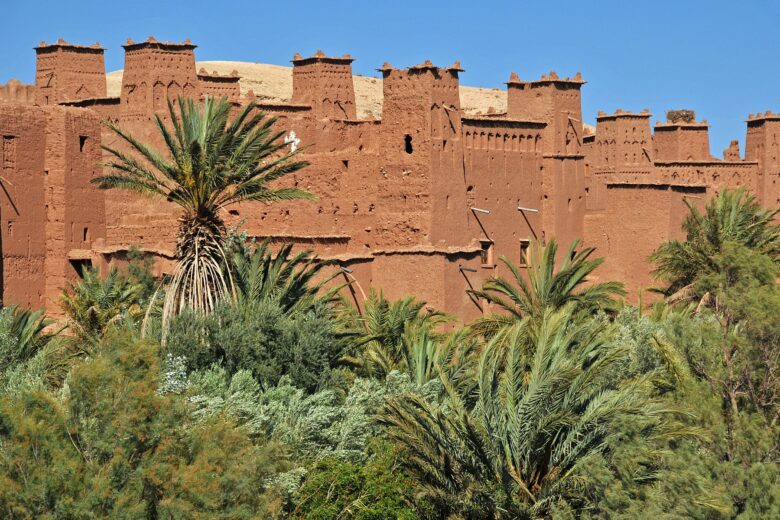Nestled at the edge of the High Atlas Mountains and near the Sahara Desert lies Ksar Ait Benhaddou, an ancient architectural marvel straight out of a storybook. Classified as a UNESCO World Heritage Site in 1987, this incredible mudbrick fortress-town captures the essence of Moroccan history, talent, and culture. But it’s much more than an ancient structure—it’s an enduring connection to Morocco’s past and present.
This blog takes you through everything you need to know about Ait Benhaddou, from its storied history to how to make the most of your visit. By the end, you’ll know precisely why it’s a must-visit destination for travelers, history enthusiasts, and film buffs alike.

A Brief Introduction to Ksar Ait Benhaddou
A ksar (pronounced “sar”) is a traditional pre-Saharan communal habitat, and Ait Benhaddou is one of the finest examples of this architectural style. Located along the former trans-Saharan trade route, this majestic walled city was once a bustling center for traders traveling with goods like salt, gold, and enslaved people. Today, it serves as a remarkable window into Morocco’s rich heritage.
What makes Ait Benhaddou so striking? The entire structure is made of earthen materials—a blend of mud, straw, and wood—designed to adapt to the punishing desert climate while showcasing stunning aesthetic details.
Please keep reading to find out more about its history, significance, and what awaits you during a visit.
Historical Background of Ait Benhaddou

Legend has it that Ait Benhaddou was founded in 757 AD by Benhaddou, a leader whose tomb is rumored to be hidden somewhere within the Ksar walls. Over centuries, the Ksar became a bustling stop on the Saharan trade route, facilitating exchanges between North Africa and sub-Saharan territories.
The Ksar’s social structure and governance were as remarkable as its architecture. A local chief would lead the community, and communal spaces, like the mosque and the public square, represented the social fabric of life here. Despite its decline as a trading hub, a few families continue to live within the Ksar today, preserving an enduring link to its historic legacy.
Architectural Features that Define the Ksar
Walking into Ksar Ait Benhaddou feels like stepping back in time. The earthen walls, intricately designed, create an otherworldly ambiance. Here are some highlights that set the Ksar apart:
- Defensive Design: Surrounding walls fortified with towers once guarded residents from outside threats.
- Communal Spaces: A mosque, public square, granaries, and even a caravansary speak of its communal functionality.
- Elaborate Details: Doors, windows, and facades feature intricate Berber geometric patterns made from mud and wood.
One of the best experiences is walking to the top of the Ksar. From the pinnacle, you’ll be rewarded with panoramic views of the Ounila Valley’s landscape, which shifts in color depending on the time of day.
Ait Benhaddou’s Star Power in Film
If Ait Benhaddou looks familiar, there’s a good reason for that! Its cinematic appearance has turned it into a favorite filming location over the years. The Ksar has provided the backdrop for Hollywood blockbusters and TV shows, including:
- “Gladiator”
- “The Mummy”
- “Game of Thrones”
- “Prince of Persia”
- “Lawrence of Arabia”
The Ksar’s ability to adapt visually makes it an irresistible choice for filmmakers. Fans visiting the site often recognize its iconic locations—and stay enthralled by its real-life charm.
Your Guide to Exploring Ait Benhaddou
Here’s everything you need to know to help you make the most of your trip to this fascinating destination.
How to Get There
- From Marrakech: It’s approximately a 3.5-hour drive southeast (around 190 km) by car or arranged tour.
- From Ouarzazate: Just 30 km away, this city is an easy base from which to explore the Ksar.
Things to Do and See
- Explore the Ksar
Wander through its alleyways, courtyards, and ancient homes.
- Climb to the Top
For spectacular views of the Ounila Valley and rolling desert landscapes.
- Join a Guided Tour
Local Berber guides offer insights into the Ksar’s history, architecture, and culture.
- Shop Local
Support artisans by purchasing handmade crafts like pottery, textiles, and jewelry at nearby stalls.
- Stay Overnight
Book a traditional guesthouse for an authentic Moroccan experience and a chance to see the Ksar under the golden hue of sunrise or sunset.
Tips for Visitors
- Visit during spring or fall for pleasant weather.
- Wear comfortable shoes for walking on uneven paths.
- Dress modestly to respect local customs.
- Carry a water bottle and sunscreen, especially in the summer months.
- Hire a local guide for in-depth knowledge.
- Be prepared for a small entrance fee for certain parts of the Ksar.
Preserving Ksar Ait Benhaddou for the Future

Years of exposure to wind, rain, and tourism have put the Ksar at risk of erosion. Continuous preservation efforts, supported by UNESCO and the local government, have kept it standing. What’s unique is the local community’s involvement—families still use traditional techniques to restore the earthen walls.
By visiting responsibly and respecting the privacy of its residents, travelers can contribute to the longevity of this stunning site for generations to come.
The Magic of Ait Benhaddou Awaits
Ksar Ait Benhaddou is more than just an architectural wonder; it’s a living testament to Morocco’s history and culture. From its breathtaking views and intricate designs to its pivotal role in history and Hollywood, this site leaves a lasting impression on all who venture there.
If you’re planning a trip to Morocco, make time to explore this timeless treasure. Whether you’re a seasoned explorer or a first-time visitor, Ksar Ait Benhaddou promises to transport you to another era, offering memories you’ll cherish forever.
Pack your bags, prepare your camera, and don’t miss out on this one-of-a-kind adventure.
By JobHijra

